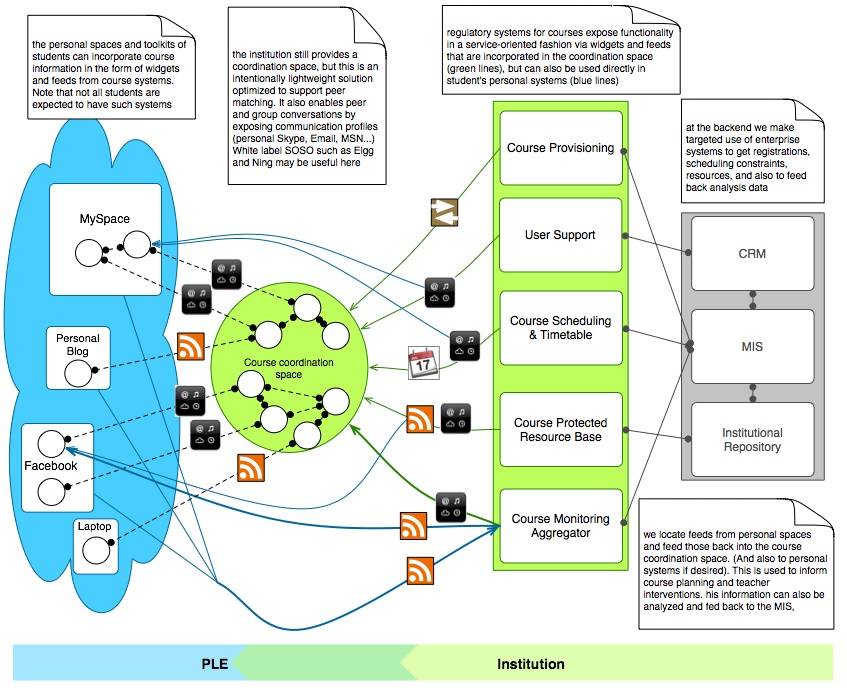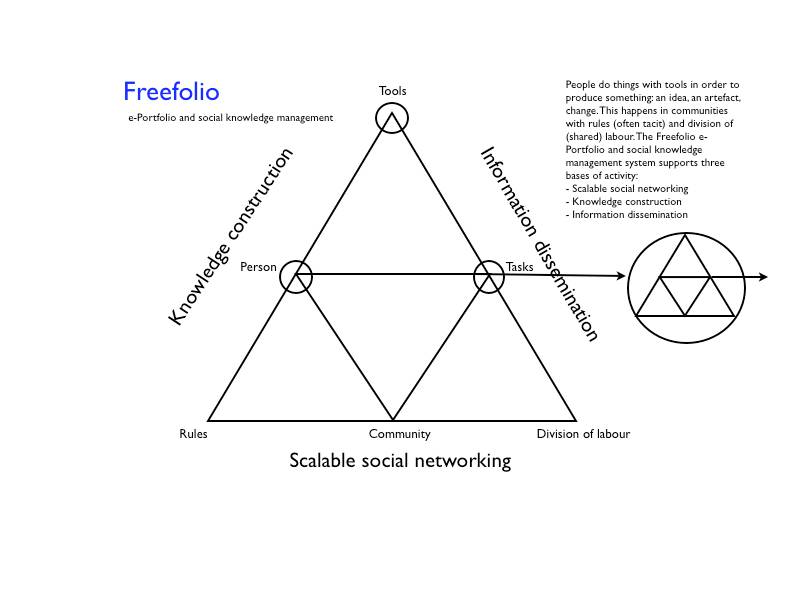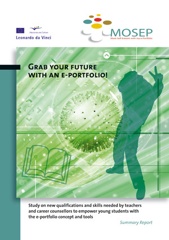I have always liked the apprenticeship model. At its best it provides authentic practice based learning and at the sme time develops an occupational identity for the learner.
At the beginning of February I am attending a conference in Vienna organised by inAp – the International Network on Innovative Apprenticeship. One of the papers I am co-presenting at the conference is entitled ‘Developing tools to support workplace competence development: e-Portfolios and apprenticeship’. I have always been interested in the potential of e-Portfolios for vocational education and training and in particular for apprenticeship. I will post a download of the full paper later this week (when I have finished the referencing etc.). In the meantime here is the key excerpt explaining why I think apprenticeship needs modernisation and how e-Portfolios can contribute to this.
Why modernise apprenticeship?
Apprenticeship is perhaps the oldest organisational form of education and training and has proved surprisingly resilient despite radical societal form. So why should we modernise it now?
The first current challenge to apprenticeship lies in the present industrial revolution based on digital technologies which is having a profound effect not only on production systems but on many aspects of society. Within enterprises we are seeing a rapid period of innovation with a shortening life cycle of products, new forms of production and new forms of organisation of production and the development of new materials and products. All these are leading to rapidly changing occupational profiles and requirements for competences, although obviously the extent of these exchanges varies greatly between sectors.
A further challenge to apprenticeship is the expansion of higher education and a consequent tendency for the prestige of apprenticeship to decline.
More significant, in the long term, may be the changing ways we are learning and developing and exchanging knowledge. Although the term knowledge based society is somewhat rhetorical, it does reflect a growing emphasis being placed on knowledge for innovation and product and process development. A major impact is the growing recognition of the importance of work process knowledge – applied knowledge in the workplace. Linked to this is a move form classroom or school based vocational learning to work based learning with an increasing emphasis on informal learning. Jay Cross claims that perhaps 85% of our learning is informal yet the major emphasis in education and training has been on the 15% that comprises formal learning.
There is also a growing recognition of the role of organisational learning and of the importance of building on the knowledge of employees. This of course, may include apprentices.
Finally – and perhaps most important – is the changing ways in which (not just) young people are using new technologies for learning and for developing and sharing knowledge. Of particular note in this respect are the use of social networks which transcend traditional work based networks and the impact of web 2.0 in facilitating the use of computers for creating as well as consuming information and knowledge.
In many ways these changes are good news for supporters of apprenticeship, particularly the increased emphasis on work based learning. Nevertheless, they present a challenge to traditional forms and organisation of training, signifying a move from knowledge and skills transmission models to more collaborative peer group forms of learning. We believe that the introduction of e-Portfolios can act as a transformative tool to build on the strengths of apprenticeship models of learning whilst at the same time modernising pedagogic processes.
What could e-Portfolios bring to apprenticeship
As we said in section 2 of this paper there are many different definitions of e-Portfolios. Our belief is that e-Portfolios represent primarily a transformative pedagogic approach. This section of the paper reflects that viewpoint.
1. Bringing together learning from different contexts
e-Portfolios have the potential to bring together learning from different contexts. This is particularly important for apprenticeships which in a dual system context have often suffered form a lack of co-ordination between school based provision and work based training. More important than administrative coordination is curriculum is curriculum and pedagogic coherence. E-Portfolios have the potential to link the content of learning from different contexts. This they can bring together practice (work based) learning and theoretical (school based) teaching. Furthermore e-Portfolios can provide for the recording of and reflection on informal learning – not just as a stand alone item – but in the context of other forms of learning.
2. Reflecting on learning
e-Portfolios can be a powerful tool for reflecting on learning. Jonassen, Peck and Wilson (1999) argue that ICT supported learning is only useful (effective and efficient) if learning is active, constructive, reflective, intentional, authentic (contextual and complex), conversational and interactive.
Active learning means that learners are actively manipulating their learning environment and observing the effects of what they have done. In this way, learners are responsible for the results of their learning.
Meaningful learning implies actions, but actions are not enough. Learners have to reflect on their actions and their observations. These reflections could or should lead to the integration of new experiences and ideas with existing knowledge or should at least leads to insight into what the learner has to learn (constructive learning). It is this combination of active and constructive learning which makes learning meaningful. Learning is not a result of just practice; learners also have to elaborate their knowledge and skills and create or construct new insights.
The authenticity of the learning environment not only leads to a better understanding of cases or principles, but also results in a better transformation of learning outcomes to other cases and contexts.
To make a learning environment authentic, it should include complex and open tasks, as well as simple ones. Like in the ‘real’ world or job-related practice, people work together and interact in order to learn, and solve problems. Cooperation between learners (both collaboration and conversation) is seen as important as a goal of learning as well as a mean of learning other content.
Within apprenticeship e-Portfolios provide a tool for reflection on authentic work based practices.
3. Recording and assessing learning
e-Portfolios can be designed to support a wide range of multi media applications. This is important for a number of reasons. Firstly many vocational learners are not confident in the use of text as a means of recording and reflecting on learning. And, in this context, it is interesting to see the rapid development of Web2.0 tools for exchanging a wide range of different digital artefacts including audio, video and photographs. Secondly for apprentices competence is often reflected in the ability to make and o things. Such competence can best be captured or recorded through digital artefacts rather than through textual explanation. Furthermore the ability to access an e-portfolio form a mobile device, PDA, telephone, digital camera, means learning can be recorded where it happens, in the workplace, rather than relying on subsequent recall.
This will in turn allow the development of authentic assessment practices, rather than relying on simple written tests which provide little indication of an apprentices competence. It could alo provide a basis for moving from assessment of learning to assessment for learning – to focusing on self and peer group assessment –and to formative assessment as part of the pedagogic process, rather than end testing as a summative procedure.
4. Lifelong Learning
There is a general understanding of the necessity of lifelong learning in order to deal with rapidly changing technologies and processes of production. E-Portfolios can provide the basis of a lifelong learning record. Furthermore data can be exported for use in different learning systems and learners can provide different views of their portfolio content for different purposes, including applications for jobs or for further education and training.
Once more, what is perhaps most significant is the process of learning, of on-going recording and reflection on activities and actions. This provides the basis for the much cited but rarely explicated lifelong learning competence.
5. Networking and communities of practice
E-portfolios allow learners to develop their own social networks and to share their work with peers. As such they can be utilised for group based and project based learning. At the same time the interconnectivity outside the classroom allows integration with wider dispersed communities of practice allowing apprentices to develop their identity as a skilled worker.


 As regular readers of this blog will know, I have spent a lot of time over the last year working on e-Portfolios and Personal Learning Environments. And I get bored just talking about things, I like to do them.
As regular readers of this blog will know, I have spent a lot of time over the last year working on e-Portfolios and Personal Learning Environments. And I get bored just talking about things, I like to do them.
